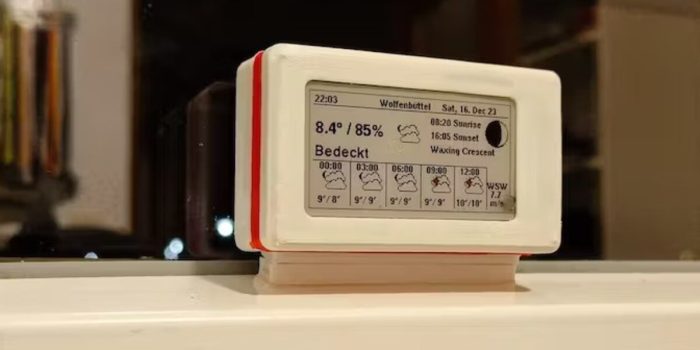Ricardo Sappia has ingeniously harnessed the power-efficient and visually striking features of E Ink displays for a solar-powered weather station. E Ink, also known as ePaper, uniquely demands power only during screen content updates, making it ideal for devices with infrequent refresh needs. Sappia’s weather station, adorned with an E Ink screen, capitalizes on this characteristic, drawing minimal power and relying entirely on solar energy for operation.

While E Ink screens are acknowledged for their power efficiency, they encounter limitations such as slow refresh rates and predominantly monochrome displays. Nevertheless, these drawbacks are inconsequential in the context of Sappia’s weather station, where a static and detailed depiction of weather conditions suffices. The clock, requiring periodic updates, undergoes partial refreshes, mitigating any practical concerns regarding E Ink’s slower refresh rates.

The solar-powered mechanism involves strategically placing the weather station against a window, optimizing exposure for a small solar panel on the enclosure’s back. Daylight recharges a LiPo battery, ensuring continuous operation even during the night. An ESP32 development board fetches weather information from the internet, updating the E Ink screen and efficiently conserving power through deep sleep mode between intervals.
The E Ink display chosen for this project is a 2.13” tri-color model with a resolution of 250×122 from Wemos, capable of rendering white, black, and red pixels. Sappia meticulously designed a comprehensive graphical user interface (GUI) that showcases various weather details, including time, date, moon state, sunrise and sunset times, temperature fluctuations, wind speed and direction, and cloud cover conditions. Although predominantly monochromatic, Sappia judiciously employs red in specific elements, such as representing the sun.

The entire system, comprising the E Ink display, ESP32 board, and other components, fits seamlessly into a compact 3D-printed enclosure. Placed on a window frame, the weather station serves as a testament to Sappia’s innovative fusion of E Ink technology, solar power, and meticulous design, resulting in a low-power, visually appealing device for monitoring weather conditions.


